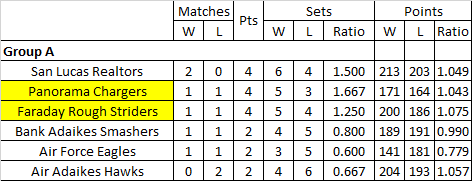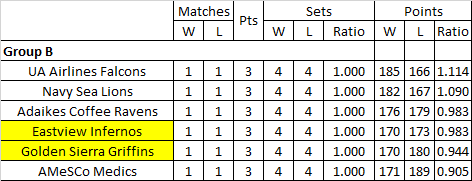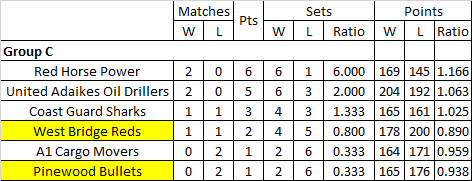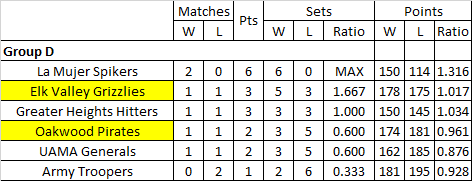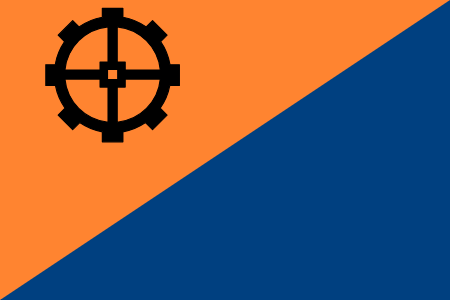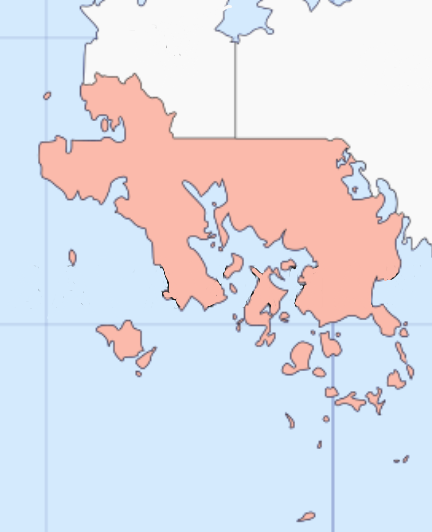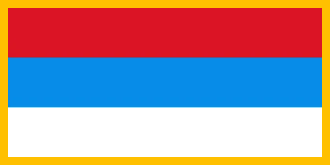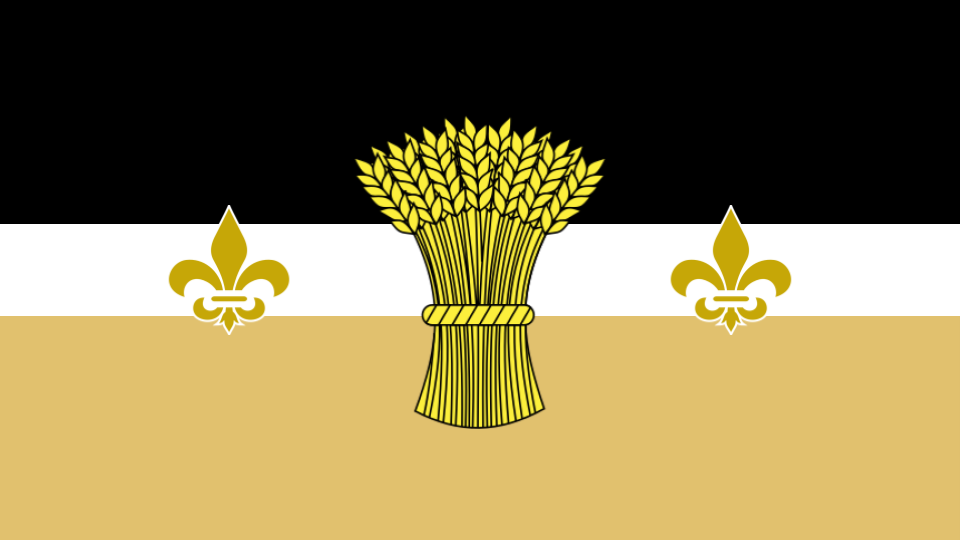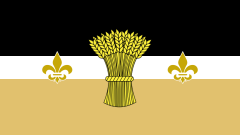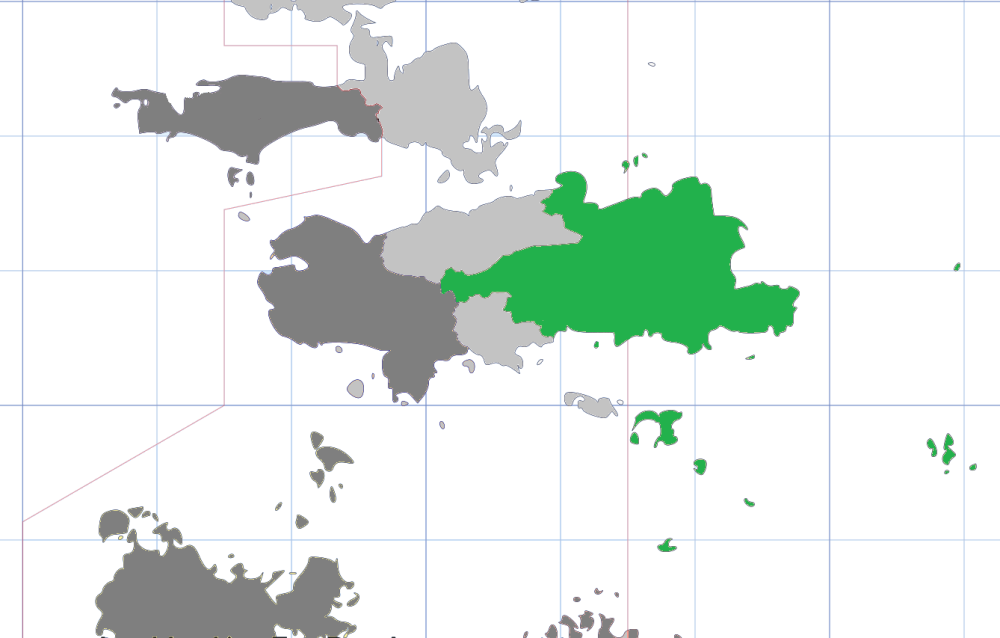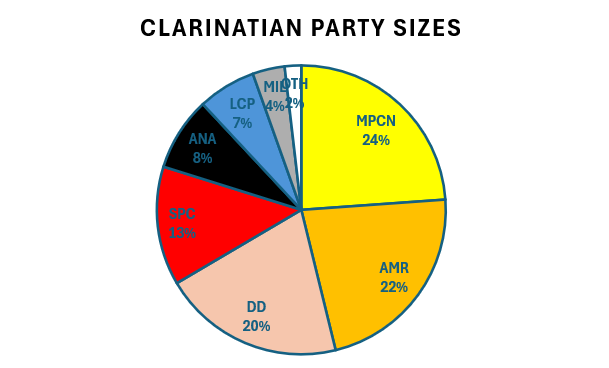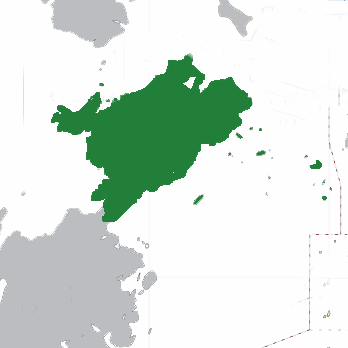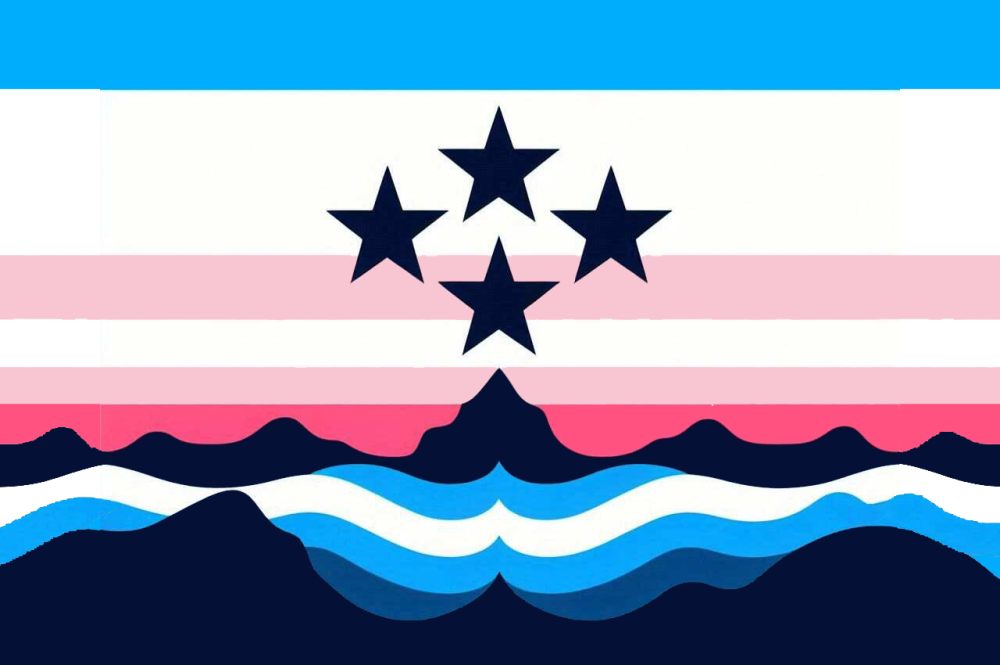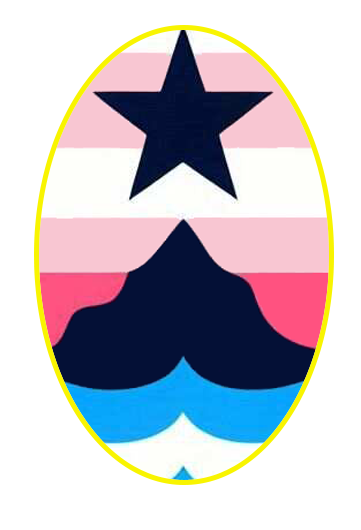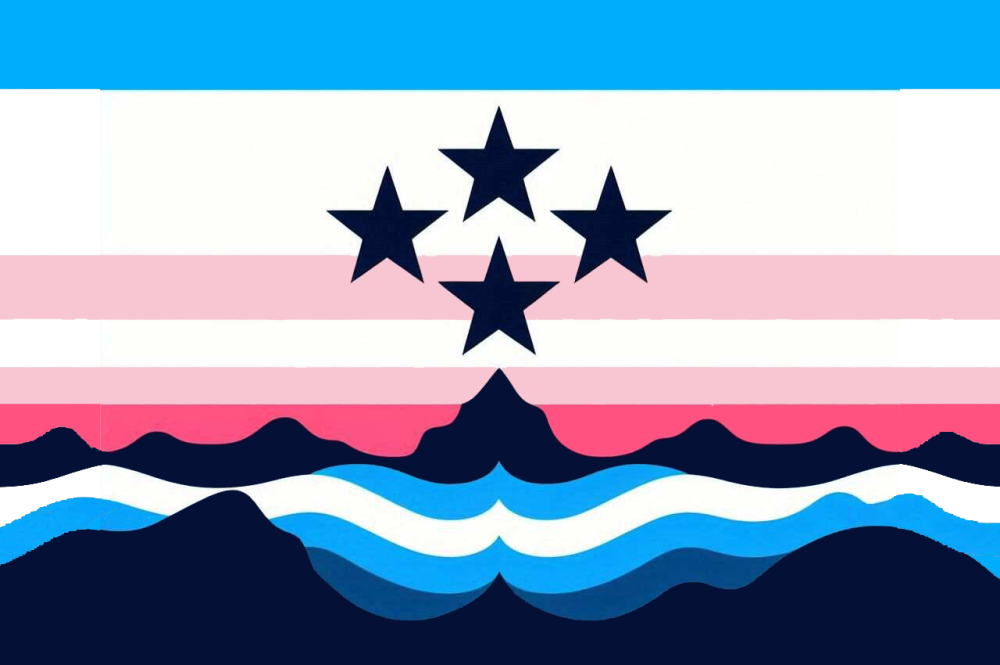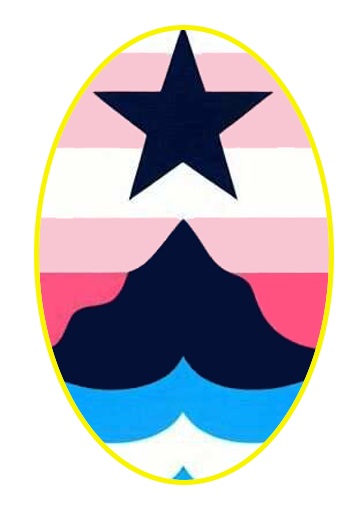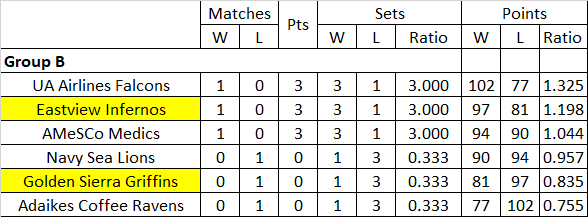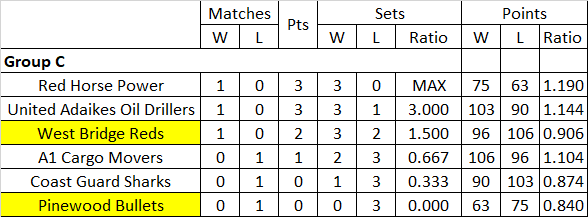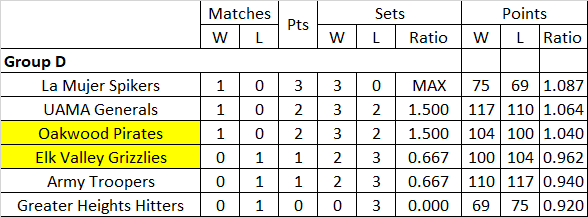Leaderboard
Popular Content
Showing content with the highest reputation since 06/04/25 in all areas
-
The Deep Dive An ONRP Radio Series presents June 4th, 1425 The Six Pillars A Deep Dive into Nouveauterran Political History and the Future Hosted by Yorick Van Der Beek and Dawood Van Rees Chapter 1: The Foundation YORICK: Nouveauterra is at a major crossroads unlike anything it has faced ever before. New found attention from hosting the Esferos Economic Expo, intervention in the Candelu Civil War to the north, spearheading the expansion of the GECA, and combining efforts with other leaders for ocean protection while trying to expand undersea mining and industry. DAWOOD: The nation’s parties now have a complex task of balancing the desires of the people, the government’s in-built expertise, and the nation’s resources towards a better future. At the heart of this effort are the six political parties which work to make their mark on the nation and in history. YORICK: The parties cover a broad swath of ideologies. Les Gens des Collines want a higher level of regional and personal autonomy from the government, while La Ligue Populaire wants a more comprehensive government safety net and an expansion of government control over certain markets, like food or medicine. Le Parti de la Patrie has openly stated that they want to reduce the number of foreign worker and student visas to, “promote domestic prosperity,” and that social safety nets are a net negative to society. Although these parties have few representatives, their presence has influenced les forces majeures, conservative Ligue de l'Accord, and liberal La Sécurité Sociale. DAWOOD: Before we begin this series in ernest, we need to establish important context for why these political parties are structured the way they are, and how laws dating back to La Guerre Civil still play out today. History YORICK: La Guerre Civil tore the country apart with bloodshed and chaos from 1254 to 1259. The Roues and the Lyonnaires came to a mutual peace in 1259 on Ile des Sirènes. As part of that peace, the political parties that had been a part of the social order before the war were legally disbanded. New parties could form, but the many positions of government that were used as prizes for political support were professionalized under Le système professionnel de l'État civil, better known as the civil service system. These political parties were also mandated to publicly disclose their financing, since the Lyonnaires had used the war chest of the République Démocratique party to fund their revolution. And the proverbial cherry on top; political parties would be legal to form in the year 1290. The peace planners believed that maybe if everyone who participated had passed away, the old grudges would go with them too. DAWOOD: All of these factors would contribute to a tumultuous time known as The Party-less Era. The Party-less Era YORICK: Some believe that political parties being banned meant the death of organized politics. That couldn’t be further from the truth. Secret parties formed throughout the country, attempting to influence voting and politics through covert activities, organizing, and in some cases murder. The time between 1260 and 1300 would see many political actors and careers rise and fall. Because of the secret nature of these parties, we can only gleam so much. But here are some parties and activities we do know about. One of the first secret parties to form was Der Jägerbund, or The Hunting Party. The Hunting Party formed in a hunting lodge in the state of Pics Rouges near the end of 1260. They were made up of former revolutionaries who had escaped imprisonment. They formed under the belief that the way to political power was through subversive actions. The Hunting Party would attempt this for years, by aligning themselves with local politicians in the areas of the old revolution. They gained followers in Pics Rouges, Champvert, Ferme, and Mare de Sang through public speeches, forums, and their most popular pamphlet, The Voice of Reason. This included business people, representatives, and local people. Their actions culminated in a deadly clash in 1262 with a siege of the Pics Rouges Regnal House, where nearly 84 people died, and 102 were wounded. The Hunting Party survivors were prosecuted the subsequent year and sentenced to death as rebels. DAWOOD: Another revolution-aligned party was The Brotherhood, formed in 1261. Although they’d have similar goals as The Hunting Party, they attempted to stay covert for a much longer span of time. Their efforts were discovered by the government in 1263, and led to the first use of an undercover investigator in the nation’s history. The investigation, lasting from 1263 to 1264, uncovered a wide spanning conspiracy to infiltrate the Viriarma, the national police service, and seize power by force. Many conspirators were arrested in late 1264, with most being sentenced to prison. Some were spared as witnesses, while others fled the country to nations like Saint Mark, and Mediobogdum. In contrast to these revolutionary parties was a secessionist group known as The Great Horn. The Great Horn consisted of Danav veterans of the Guerre Civil, and revolutionaries, who believed they had an opportunity to break away from the nation. This was based on the depleted military, with a cash-poor government, and weak territorial control of law enforcement. The Great Horn would coalesce in 1261, and started to make political moves in the ensuing years. YORICK: Although their original aim was secession, they were intercepted by another group, The League of the Oath. The League of the Oath formed at the beginning of 1260, and were composed of generals, government administrators, and like-minded business people. All of them were unified in one mission; destruction of revolutionary thought in Nouveauterra. They had fought in an official capacity against the revolution, but wanted to, “Continue the efforts of national unity beyond the warfront.” DAWOOD: The League of the Oath would use the different offices of government, both through official and unofficial means, to continually undermine the forces that still believed in the revolutionary ideals. Raids on tea houses, extrajudicial killings, and scheming that hamstrung many groups, like The Brotherhood and The Hunting Party. The League of the Oath and The Great Horn are connected, because they would cut a deal in 1268. The deal meant that The Great Horn would stop its secessionist activities, but they would help The League of the Oath in clamping down on secessionists and revolutionaries in the countryside. In return, The League would fight to pass expanded civil rights for the Danav people. YORICK: The two parties, through this deal, would work together towards national unity, and by the 1270s would become the dominant forces in political culture. Wherever secessionist, or revolutionary forces would spring up, the two parties, historically referred to as The National Compact, would squash them down. DAWOOD: The National Compact would operate throughout the 1270s to the 1290s without much interference. The League of the Oath would indeed keep their promises, and assisted in passing land development in Danav areas, as well as civil rights legislation throughout this time. Their pamphlet, La Colombe, was circulated in daily and weekly papers like Le Crieur de Gue, and L'Examinateur Quotidien, to instill republican ideology into the people who read it. This political force would start to lose power by the end of the 1290s. Multiple changes in government, and a new political movement of Responsible Republicans would see the ouster and arrest of League politicians. The Responsible Republicans, born out of racial animosity towards foreign people and Danav people, gathered into a coherent movement by 1296. They were opposed to the rights given to Danav people, such as easier access to voting, land grants and land banks, as well as new developments such as expanded telegraph lines and train routes. The Responsible Republicans’ biggest achievements from 1296 to 1315 were undoing the work of The National Compact, and causing a split in its two constituent parts. YORICK: This long era culminated in The Special Committee on Subversive Organized Groups forming in 1298. The Committee, held in the Upper Assembly, would officially investigate the secretive parties, both for historical purposes, and to get a better sense of their contemporary situation. DAWOOD: The Committee would eventually identify 39 different political parties that had formed and/or disbanded between 1260 and 1298. Some parties were just a handful of people, while others like The League of the Oath would boast over 400,000 official members, at a time when the nation’s population was just cresting 2.5 million people. YORICK: With this context laid out, we can dive into the individual parties that exist today, starting with the oldest; La Ligue de l'Accord.3 points
-

UAD-ARF Football Friendlies
Federation of Inner Ryxtylopia and one other reacted to United Adaikes for a topic
Historic Signing: @United Adaikes & @Arifiyyah Forge New Football Partnership The grand halls of the Thraproy Grand Convention Center buzzed with anticipation as journalists from across United Adaikes and a visiting press corps from Arifiyyah gathered to witness the signing of a groundbreaking sports agreement between the two football-crazed nations. Flanked by the flags of both countries, the high-profile delegations took their seats at the center stage, ready to formalize a partnership years in the making. Under the glow of camera flashes, President Luke Salazar and Arifiyyah’s Sultan Arif Nazhim Shah exchanged firm handshakes before putting pen to paper, officially ratifying the United Adaikes-Arifiyyah Bilateral Sports Cooperation Agreement. The document, bound in sleek leather, symbolized not just a commitment to football but a bridge between Polaris and Aura. Foreign Affairs Secretary Anne Duncan addressed the room first, emphasizing the diplomatic significance: "Today is more than just about sports—it’s about unity. Through this agreement, we celebrate shared passion, respect, and the spirit of competition that will bring our peoples closer." United Adaikes Sports Commission Ezra Moors stepped up to the podium, unveiling the key points of the agreement to the press: Annual Senior National Team Friendly: A marquee match between the Adaikesian stars and Arifiyyah’s national squad, alternating host nations each year. Champions’ Showcase: The domestic league winners of both nations (Adaikes Premier Football League champions vs. Arifiyyah Premier League champions) will clash in a preseason exhibition. Youth & Coaching Exchanges: Joint training camps and development programs for rising talents. Infrastructure Collaboration: Shared expertise in stadium modernization and sports science. "This isn’t just a schedule—it’s a legacy," Moors declared. "We’re building a rivalry that will inspire generations." President Salazar grinned as he took questions, his voice brimming with pride: "Football is the heartbeat of United Adaikes. And now, we share that heartbeat with Arifiyyah. Let the best team win—but let the friendship last forever." Across the table, Sultan Arif Nazhim Shah echoed the sentiment, adding a playful jab: "Football is also the heartbeat of unity in Arifiyyah. When I mentioned this partnership to my brother, Muhammad Nazhim, our national team captain, he was thrilled about the collaboration and friendship we’re fostering. Winning or losing comes second—what matters most is the sportsmanship and camaraderie between players. But this year, I might owe someone a box of Arifiyyah’s finest pizza if we don’t win—hahaha!" Laughter rippled through the room before United Adaikes Football Association Head Myron Lillakis and Arifiyyah’s National Football League President Aiman Afifi Bakeyuddin shook hands over the new trophies unveiled for the annual friendly series, its polished surfaces awaiting the first engraving. The trophy on the left will be given to the winner of the international senior team friendly, while the trophy on the right will be given to the winner of the domestic league champions friendly. With formalities wrapped up, journalists scrambled for additional soundbites as the delegations mingled. The Adaikesian press speculated on potential venues, while Arifiyyah’s media debated squad selections. One thing was certain: a new chapter in Esferos football had begun.2 points -

UAD-ARF Football Friendlies
Federation of Inner Ryxtylopia and one other reacted to Arifiyyah for a topic
ARIFIYYAH REPRESENT: BANDA BAHARU CITY FC Official Name: Banda Baharu City Football Club Year Founded: 1321 Nickname: The Citizens 1424/1425 Hone Kit Location and Stadium City/State: Banda Sultan Nazhim II, Banda Baharu Stadium: Sultan Nazhim II Grand Stadium Capacity: 68,000 Known for its roaring atmosphere and iconic architecture, it’s the fortress of the Bandaran faithful. Achievements League Titles: 35 Wins FA Cups: 16 Wins League Cups (Sultan Arifiyyah Cup): 14 wins. Recent Success: Crowned Arifiyyah Premier League 2024/2025 champions. Clinched the FA Cup in the same season, completing a historic domestic double. Team Style and Tactics Playstyle: Possession-based football, controlling games with precision passing and strategic positioning. Style Rating: +2.5 Management and Players Management Team 1. President: Tuan Haji Azlan Hafiz bin Abdullah 2. Vice President: Encik Amirul Hakim bin Shahruddin 3. Chief Executive Officer (CEO): Puan Sri Nadia Khairunisa binti Zulkifli 4. Director of Football: Encik Fariz Aiman bin Razali 5. Financial Officer: Puan Sofea Nur Amirah binti Idris 6. Head of Media Relations: Encik Hakim Afdhal bin Rahman --- Coaching Staff 1. Head Coach: Encik Muhammad Zikri bin Syahmi 2. Assistant Coach: Encik Faizal Rizqi bin Rahmat 3. Goalkeeping Coach: Encik Shahril Iqbal bin Mansor 4. Fitness Coach: Encik Luqman Haziq bin Khalid 5. Tactical Analyst: Encik Arif Danish bin Mahfuz 6. Youth Development Coach: Encik Irfan Haikal bin Abdullah 7. Physiotherapist: Puan Aisyah Liyana binti Idris Banda Baharu City FC Squad List (1424/25 Season) Goalkeepers (3) 1. Amzar – GK – 35 2. Hafeez Harith – GK – 22 3. Syafiq Zharif – GK – 28 Defenders (8) 4. William Saliba – CB – 21 5. Shafiq Aiman – CB – 30 6. Rizqi Danish – CB/CDM – 26 7. Arif Danial – LB/CB – 25 8. Irfan Zulkarnain – LB – 21 9. Faiz Hilmi – RB/RWB – 27 10. Iskandar Haziq – RB/CB – 27 11. Syafiq Rizwan – LM/LB – 28 Midfielders (8) 12. Syameer Kutty – CDM/CM – 24 13. Hakimi Rashid – CDM/CM – 29 14. Ikhwan Firdaus – CM/CAM – 23 15. Adam Luqman – CAM/CM – 23 16. Faris Amir – CDM/CB – 28 17. Zulhilmi Hadi – RM/RW – 24 18. Aiman Khalid – RW/RM – 20 19. Syafiq Danish – LM/LW – 22 Forwards (3) 20. Luqman Hakim – ST – 20 21. Najib Razak – LW – 18 22. Hafiz Aqil – RW/ST – 22 Average Lineup Fan Culture Fan Name: Bandaran Known as some of the most passionate and creative fans in Arifiyyah. Famous for their tifos, displayed at every match, often blending artistry with powerful messages. Rivalries: A heated rivalry with Medina Arif FC, marked by intense matches and fan banter. A local rivalry with Kota Tinggi FC, fueled by regional pride.2 points -

Adaikes Volleyball League
Arifiyyah and one other reacted to United Adaikes for a topic
1423 AVL Invitational Group Stage Match Day 2 (Highlighted teams in yellow are UAAUA member schools) Group A (Realtors stay perfect, Chargers and Hawks stumble) San Lucas Realtors 22 25 25 17 16 Faraday Rough Striders 25 20 21 25 14 Realtors stun the Rough Striders! After winning their opener, San Lucas struggled with a gritty 22-25, 25-20, 25-21, 17-25, 16-14 victory. Faraday’s usually solid defense cracked under pressure—Realtors take 2 match points. Panorama Chargers 21 15 26 25 9 Bank Adaikes Smashers 25 25 24 22 15 HUGE UPSET! The Smashers shocked the Chargers (25-21, 25-15, 24-26, 22-25, 15-9). Panorama collapsed after tying 2-2—Bank Adaikes steals 2 match points. Air Adaikes Hawks 21 24 25 25 11 Air Force Eagles 25 26 9 13 15 The Hawks remain winless, Eagles survive in a five-set thriller (25-21, 26-24, 9-25, 13-25, 15-11). Air Force fought hard but faltered late—Eagles take 2 match points. The Realtors lead a chaotic Group A, while Panorama’s loss opens the door for underdogs. Group B (Griffins bounce back, Infernos fall, Ravens roar) UA Airlines Falcons 18 22 25 18 Golden Sierra Griffins 25 25 14 25 Griffins rebound! The UAAUA champs dominated the Falcons (25-18, 25-22, 14-25, 25-18) after their shock loss in the first matchday. UA Airlines’ inconsistency starts—Griffins take 3 match points. Navy Sea Lions 25 17 25 25 Eastview Infernos 20 25 12 16 Sea Lions sink the Infernos! Navy avenged their opening loss with a 25-20, 17-25, 25-12, 25-16 rout. Eastview’s Cinderella start fades—Navy takes 3 match points. Adaikes Coffee Ravens 24 25 25 25 AMeSCo Medics 26 16 19 16 Ravens finally win! After a tough opener, they crushed the Medics (24-26, 25-16, 25-19, 25-16). AMeSCo’s defense collapsed—Ravens take 3 match points. A six-way logjam! Every team is 1-1, making Group B the most unpredictable. Group C (Power and Drillers survive, Movers stumble) West Bridge Reds 25 16 18 23 Red Horse Power 19 25 25 25 Red Horse stays strong! The Power overcame the Reds (19-25, 25-16, 25-18, 25-23) after dropping the first set. West Bridge’s inconsistency costs them—Red Horse takes 3 match points. United Adaikes Oil Drillers 16 25 25 20 15 Pinewood Bullets 25 19 23 25 10 Bullets push Oil Drillers to the brink! A nail-biter (16-25, 25-19, 25-23, 20-25, 15-10) saw the Drillers escape. Pinewood’s effort goes unrewarded—Oil Drillers take 2 match points. A1 Cargo Movers 19 21 18 Coast Guard Sharks 25 25 25 Sharks bite back! After losing their opener, Coast Guard swept the Movers (25-19, 25-21, 25-18). A1’s early promise fades—Sharks take 3 match points. Red Horse is the class of Group C, while the Oil Drillers keep finding ways to win. Group D (Spikers stay perfect, Pirates and Troopers lose) UAMA Generals 20 17 8 La Mujer Spikers 25 25 25 Spikers dominate again! La Mujer crushed the Generals (25-20, 25-17, 25-8) in a statement win. UAMA’s struggles start—Spikers take 3 match points. Oakwood Pirates 20 29 21 Greater Heights Hitters 25 31 25 Hitters finally win! After the loss in the first matchday, they outlasted the Pirates (25-20, 31-29, 25-21). Oakwood’s inconsistency hurts them—Hitters take 3 match points. Army Troopers 26 22 23 Elk Valley Grizzlies 28 25 25 Grizzlies maul the Troopers! Elk Valley rolled (28-26, 25-22, 25-23) in a tight battle. Army’s five-set magic in the first matchday ran out—Grizzlies take 3 match points. La Mujer Spikers are the team to beat, while the Grizzlies solidify their contender status.2 points -
1 point
-
got my login updated, appreciate your help1 point
-
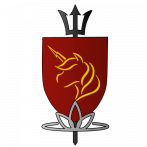
The Pineapple Apparatus - The 1425 Presidential Election
Chris reacted to Overthinkers for a topic
one “...Anders District Police have stated that they have identified a possible suspect, but will not be releasing any details at this time. OSCAR1 is also on site working with local authorities.” Jeromy Alemas was realizing he really needed to find a hobby. There was no point in retiring if all he was going to do was continue analyzing global geopolitics. Normal people did not spend their days trying to simulate international incidents. At least now he could do it with a drink in hand. The TV anchor droned on. “The Wedge campaign administration have released multiple statements, most of which say the same thing–Councilor Wedge is alive, but they cannot state his condition. Sources close to the candidate have declined to comment.” That was a bad sign. Alemas took another sip. Wedge was a fraud and a bigot, sure, but a broad-daylight assassination would cause more problems than it solved if it succeeded. It was already turning into a considerable mess in the interim. It was like clockwork. President Auguste, followed by every party leadership, put out statements condemning the act, calling for swift justice, and sending thoughts and prayers to Councilor Wedge and his loved ones. Every available OSCAR agent descended on Anders. ODP had held two press conferences since yesterday, rallying their voters around their new martyr. On second thought, “mess” might have been a naive descriptor. A more conspiratorial mind would think whoever attempted this was getting exactly what they wanted. Alemas did not like that thought. The doorbell rang. Alemas jumped up to answer it. He caught himself. No, he had had the camera system installed for a reason. For Grayson’s sake as much as his own, but it was pointless if he didn’t use it. He found the security panel and checked the feed. A solitary woman was at the door, clearly trying very hard to be inconspicuous. Despite the baggy clothes and baseball cap, he could tell she was younger–younger than him, at least. A big Falcons logo was emblazoned on the hat, indicating awful taste in rugby teams. There could have been few more suspicious people at his door, but Alemas was bored enough to take a risk. He pushed the mic button. “Be there in a moment.” Sliding over to the bookcase, he opened a hidden compartment and retrieved a stun gun. He then tucked it behind him as he went to answer the door in person. “What do you want?” he asked. The woman looked him directly in the eyes. “Special Agent Samuels?” Immediately he tensed. Anyone who knew about that could only be bad news. But he held on to his facade. “What do you want?” he repeated. “I need to talk to you.” “If you need your ex killed, you’re in the wrong place.” “It’s about what happened in Anders.” She continued to stare him down. “You should be talking to the district police about that, not…looking for a special agent.” “They won’t listen to me.” Oh gods, she was a theorist, wasn’t she. “Well then. I hope you can find who you’re looking for. He doesn’t live here.” “Don’t—” “Ope, excuse me,” intervened Don, the mailman. “Package for you, Jeromy. They wanted you to sign for it.” Alemas gratefully disengaged from the prior encounter and took the tablet to sign. He was equally confused by the parcel, however. He was not expecting any orders. It was an unmarked box, less than 20 centimeters deep and high and 30 wide. Maybe Grayson had something coming? No, it was definitely addressed to “Jeromy Alemas”. He exchanged the sign tablet for the package. “See ya,” Don said cheerily. He stopped to acknowledge the woman. “Pardon again, miss.” The courier then resumed his rounds. This left Alemas alone with the crazy girl again, but he had played off worse outs. “Sorry, I need to go in and unpack this.” “Okay.” She did not seem interested in leaving. “Have a good day.” Alemas gently closed the door in her face. He suppressed a loud swear as he deposited the mystery package on the kitchen counter. In his past life, he had known Dalimbari with more tact. No use dwelling on it, though. Now, about this box… A few swift strikes with a knife revealed the contents. A single, fresh pineapple. Now Alemas was truly scared. This was the second reference to his long-buried past to appear in the span of a few minutes, and it could not possibly be coincidental. Had the woman at the door arranged this? He checked the camera again. She was still outside, waiting. Defeated, he returned to the door. “Alright. Come inside. I’ll hear you out.” ~<(*)>~ “Thank you again, Agen–” “ ‘Jeromy’, please. I left the badge and name behind for a reason.” He finished setting the customary hospitality coffee and turned on the machine. “And I think it’s only fair you tell me who you are.” “Meade. Bryn Meade.” The guest had declined to sit down and was simply standing ominously in the kitchen doorway. “And you’re with…?” “Myself.” How enlightening. If she was a foreign asset, they weren’t sending their best. “If you insist. Alright then, what’s the deal with Anders.” “Everything,” Meade began, unfazed by Alemas’ condescension. “ODP wouldn’t have a hope or a prayer in this election under normal circumstances, right?” “Sure.” “So why would anyone try to assassinate their candidate?” “I don’t know.” “Exactly. It only feeds their little persecution complex, right? Second. You can see on the footage just how many cops were on scene and how quickly they responded. How’d anyone get through all that?” “You tell me.” “And most of all. The way the shot was timed right after those iconic ‘final words’. You couldn’t have scripted it any better. And the guy getting up afterwards to repeat it, as if a man had not been shot in broad daylight in front of him? What was his deal?” “You mean to tell me it’s an inside job, then.” “I think it was fully staged, and either something went wrong or Wedge is playing up being hurt. You couldn’t buy this kind of media attention during an election year.” The coffeemaker chimed to indicate it was done brewing, providing a natural break in the conversation. “Cream or sugar?” Alemas asked, pouring the first cup. “Neither, thanks.” Meade accepted the mug from him. Alemas dumped a heaping tablespoon of sugar into his coffee and a splash of milk. He was dying to ask about how this woman had found him. Casual conspiracy theorists didn’t have the wits or resources to track him down. A ranked, competitive conspiracy theorist would have a better story. But anyone will show their hand if you act like you’re not playing, he reminded himself. And the pineapple on the counter continued to perplex him. “Okay then, suppose that’s true. What does any of it have to do with me?” “I should think it has to do with all of us, given that it’s a presidential election.” “But I said at the beginning. You need to take this to authorities. I don’t know what I’m supposed to do about it.” Meade’s demeanor had still not changed. “And I said they weren’t listening, even when I showed them the website.” “I’m sorry, the website?” Meade produced an eyePhone and began furiously tapping. “Here. There’s this old tech forum that they’re using to send messages. They’re in code, but I’m dead certain it’s an underground network.” GeekApparatus.sg, the banner said, in full 1400s web design glory. The thread itself was recent, ostensibly about what must have been a new Zoranian video game. Alemas had never been current on that sort of thing. And the posts themselves seemed barely coherent. “The fourth stage takes *wayyyyyy* too long,” one user complained. Another quoted that post, adding, “There is a new pizza parlor down the street, actually.” A third user opined, “I like Frodo. How’s yours?” followed by a string of low-resolution emoticons. “I don’t unde–” Alemas started to say, but was interrupted by realization. The syntax of these messages was familiar. A lot like something he had learned 15 years ago. No, that was it. The words were different, but it was her code. Alemas swore under his breath. There were too many coincidences happening in short succession today. “What is it? Do you know it?” Alemas composed himself. “I…ahem, it’s vaguely familiar, yes,” he hedged. He found himself glancing back at the pineapple. “So it is something,” Meade concluded. Some of the pieces were coming together. Yes, based on how they split, this wasn’t an unreasonable outcome. But gods, even she had higher standards than ODP. What was her game? And how did this alarmingly intense “Meade” fit into it? Were they working together? Were they dragging him into it? They knew where he lived, and by extension where Grayson lived. Did he have the option to stay out of it? “You’re the only person I know of who’s able to get to the bottom of this,” Meade pressed. “If I’m right, and they get away with it, all bets are off for the next six years.” Alemas took a long, slow drag of his coffee. “So be it. Where do we start?” 1. The Overthinkers State Crime Administration & Registry, the nation’s highest law enforcement agency.1 point -

Greetings from New Cressida
Zoran reacted to Jade - Europeian Ambassador for a topic
Hello, everyone! I'm here as an ambassador from Europeia, and I'm excited to get to know some of y'all and to keep up a lovely relationship! I'm Jade, leader of a little socialist nation called New Cressida. I'm not the best at introducing myself, but I promise I'm nice when talking normally! Have an amazing day/night and don't be afraid to talk to me if you feel inclined!1 point -
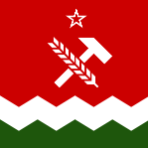
The Mapplication™ Thread - Join the world of Esferos!
Aethenstaff reacted to Fujai for a topic
Esferos v1.28 Welcome @Aethenstaff! For balancing purposes, some of your responses relating to your nation's basic statistics may have been changed. Please check the Big Book of Numbers and let us know via DM if you'd like any of them changed and we'll work on it together. You can also check out more info on balance in the Guidance on Session Zero. We encourage you to use the Sheets comment feature to comment desired changes on cells in your row and we'll update them for you (this also applies to blank cells). You may now access the entirety of the TWP Roleplay Discord server, including your continent chat! Balance changes made to requested statistics:1 point -
United Kingdom of Satavahan Satavahan Sanyukt Rajya Flag Motto: Yato Dharmastato Jayah. "Where there is dharma, there is victory." Anthem: Shata Satavahana Ujjwal "Our Sparkling Satavahana" Duration: 1 minute and 13 seconds.1:13 National Emblem Sanyukt Satavahan Rashtriya Chinha National Emblem of United Satavahan Map of Satavahan Capital city Largest City Magadh City Kuru City Official language National Language Common and Prakrit 12, including Prakrit, Vangi and Teregu Ethnic groups 43% Uttaran 31% Draviran 15% Vangalan 9% Wumbhi Religion 77% Bhaktayan 16% Hinayan 7% other religions Demonym(s) Satavahani Government Constitutional Monarchy • King(Maharajan) Wridhdhiman Nanda • Prime Minister (Pradhana Mantri) Sagar Kumar • Speaker of the General Assembly Sunanigidhi Pranay Kumar • Cheif Justice of the Supreme Court Indranil Naik Legislature National Parliament • Upper House • Lower House House of Royal Representatives (Shahi Sabha) House of General Representatives (Lok Sabha) Area • Total 175,155 km2 (67,628 sq mi) Population • Total 16,514,637 • Density 94.3/km2 (244.2/sq mi) GDP (PPP) In IMU • Total $366.162 bilion • Per capita $22,172 Currency Satavahani Saun (SSN) Time zone IAT−8 Date format dd/mm/yyyy Drives on right Calling code +1 07 2-Letter Code ST 3-Letter Code STV TLD .st Satavahan, officially The Kingdom of Satavahan is a country located in the Trodskayan islands of Polaris. Bounded by the twin seas to the south and a great mountain range in the north, Satavahan is a peninsula consisting of nine distinct states and four Union Teritorries. Humans had inhabited the lands of modern day Satavahan from as far back as 5000 thousand BCE, with tribes living in the banks of Yamani River forming the early civilizations. History The roots of Satavahan reach back to the ancient lands. In the 3rd century BCE, a visionary ruler named Simuka laid the foundation of the Satavahana dynasty. Simuka's reign marked the birth of a new era, where smaller principalities were united under a common banner, setting the stage for Satavahan's rise to prominence. Under the reign of early Satavahana rulers, the nation experienced a golden age of remarkable prosperity and cultural flourishing. Political stability paved the way for ambitious territorial expansions. Satavahana monarchs showcased their military prowess, skillfully maneuvering through diplomatic alliances, strategic marriages, and military conquests, extending their dominion over vast regions of the Deccan. Situated at strategic crossroads, Satavahan became a hub of vibrant trade and maritime influence. Its coastal locations and control over key ports facilitated extensive trade networks that spanned across continents. Satavahana merchants embarked on daring journeys, connecting with distant lands and establishing lucrative trade relationships with the global powers. Great empires inevitably face challenges, and Satavahan was no exception. Invasions by the Shakas and the Ikshvakus posed significant threats, resulting in periods of turmoil and territorial losses. However, the indomitable spirit of the Satavahan people and their resilient rulers enabled them to weather these storms, preserving their cultural identity, reestablishing their dominion, and ushering in new eras of prosperity. The colonial era cast a long shadow upon the land of Satavahan, as world powers vied for influence and control. During the 16th century, foreign traders and colonizers arrived, seeking to establish commercial outposts and expand their empires. Satavahan, strategically located along the coast, became a coveted prize in the race for dominance. The colonial powers left an indelible mark on Satavahan. They introduced new technologies, economic systems, and cultural influences. However, the Satavahan people fiercely resisted colonial domination, fiercely guarding their cultural heritage, and fighting to maintain their sovereignty. Numerous uprisings, rebellions, and movements emerged, fueled by a deep sense of national pride and a desire for freedom. The 19th and 20th centuries witnessed a growing tide of nationalism and the intensification of the struggle for independence in Satavahan. Visionary leaders emerged, rallying the Satavahan people against colonial rule. Through nonviolent resistance movements, such as satyagraha, civil disobedience, and mass protests, the nation united in its quest for self-rule and liberation from foreign domination. Finally, in [year], Satavahan achieved independence from colonial rule, marking a historic milestone in its history. The nation emerged as a sovereign entity, holding onto its cherished Constitutional Monarchy system while embracing democratic governance. A constitution was crafted, democratic institutions were established, and the nation embarked on a path of nation-building, reconciling its diverse cultural heritage with aspirations for progress and unity. Government Satavahan, an illustrious nation nestled in the NationStates world, embraces the governance model of a constitutional monarchy. This unique system intertwines the rich tapestry of Satavahan's cultural heritage with democratic values, fostering stability, tradition, and a sense of unity. At the heart of Satavahan's government lies a constitutional monarchy, where a hereditary monarch serves as the ceremonial head of state. The monarch's role is primarily symbolic, representing the nation's unity, history, and cultural identity. The monarchy operates within the framework of a constitution that outlines the distribution of powers, rights, and responsibilities among various branches of the government. While the monarch's role is ceremonial, it carries immense symbolic significance. The monarch acts as a unifying figure, representing the continuity of Satavahan's history and culture. The monarch may also fulfill ceremonial duties, such as state visits, addressing the nation on important occasions, and participating in cultural and social events. The monarch's presence serves as a unifying force, fostering national pride and cohesion. Satavahan's constitutional monarchy incorporates democratic governance, with citizens participating in the decision-making processes. Through regular elections, citizens have the opportunity to elect representatives who serve in the legislative branch. This democratic system allows for the expression of diverse voices, ensuring accountability, transparency, and the protection of individual rights. The government of Satavahan embraces the principle of separation of powers, dividing authority among the executive, legislative, and judicial branches. This ensures checks and balances, preventing the concentration of power in any single entity. The executive branch is responsible for day-to-day governance, while the legislative branch enacts laws and represents the interests of the citizens. The judicial branch ensures the fair interpretation and application of laws. Satavahan's government encompasses various institutions that contribute to the functioning of the nation. The executive branch, led by the prime minister, oversees the administration of the government and implementation of policies. The legislature, comprising elected representatives, formulates laws and deliberates on matters of national importance. The judiciary ensures the impartial interpretation and application of laws, safeguarding justice and upholding the rule of law. Satavahan's government takes pride in preserving and honoring the nation's rich cultural heritage and traditions. The government supports initiatives to promote arts, literature, music, and dance, preserving the nation's cultural identity. Cultural events and festivals are celebrated throughout the year, serving as a means to unite the citizens and showcase the nation's diverse traditions. Economy Satavahan's strategic location has positioned it as a key player in regional and international trade. The nation's coastline, dotted with bustling ports and harbors, has historically served as gateways for maritime trade with far-flung lands. Satavahana merchants are known for their entrepreneurial spirit, facilitating the exchange of goods, spices, textiles, and luxury items, which contribute to the nation's wealth and influence. Agriculture forms the backbone of Satavahan's economy, with fertile plains and a favorable climate nurturing abundant harvests. The nation's agricultural sector boasts a diverse range of crops, including rice, wheat, pulses, sugarcane, cotton, spices, and fruits. The innovative use of irrigation systems and sustainable farming practices ensures a steady supply of agricultural produce, supporting both domestic consumption and export markets. Satavahan has a rich tradition of cottage industries and handicrafts that add vibrancy to its economy. Skilled artisans create intricate textiles, pottery, woodwork, metalwork, and jewelry, showcasing their craftsmanship and preserving ancient artistic traditions. These products find a ready market locally and abroad, attracting art connoisseurs and collectors. Satavahan has experienced significant industrial growth, with a focus on manufacturing sectors such as textiles, steel, automobiles, and electronics. The nation has embraced technological advancements and innovation, nurturing a thriving industrial sector that contributes to employment generation, export earnings, and economic diversification. Satavahan prides itself on its emphasis on innovation and technological advancements. The nation fosters an environment conducive to research and development, encouraging scientists, engineers, and entrepreneurs to push the boundaries of knowledge and create cutting-edge technologies. This focus on innovation drives sectors such as information technology, biotechnology, renewable energy, and space exploration, positioning Satavahan as a hub for technological progress. Satavahan's rich cultural heritage, diverse landscapes, and historical monuments attract tourists from around the world. The nation's tourism and hospitality industry has flourished, offering a range of accommodations, restaurants, and experiences that showcase the nation's natural beauty, cultural traditions, and historical sites. This sector contributes significantly to employment opportunities and revenue generation. Satavahan has a robust financial sector that provides essential services for businesses and individuals. Well-established banks, financial institutions, and capital markets facilitate investment, trade financing, and credit availability. The stability and efficiency of the financial system support economic growth and entrepreneurship.1 point
-

[Factbook] The Republic of Inseberistan
Nalibia reacted to Inseberistan for a topic
GEOGRAPHY The geography of Inseberistan is overall mountainous, with one of the highest peaks in Nur, Mount Corderus, being located on the eastern Inseberi coast. 2 prominent mountain ranges, regionally referred to as the the Tinerelk, and the Vorghiners respectively, create a valley in western Inseberistan. Besides the mountainous terrain, the rest of Inseberistan mostly is comprised of rolling hills covered by forests. The largest body of water within Inseberistan is Lake Akostva, which the capital city of Teplosato happens to be on the coast. The climate of Inseberistan is a compilation of tropical dry and tropical moist broadleaf forests. In the east where the elevation rises, the climate transitions to one of that much colder. There, Mount Corderus is topped by a tundra biome. Lush forests cover the many mountains, hills, and marshes in Inseberistan, and equally filled with many kinds of wildlife, such as mountain lions, which are the national animal of the country.1 point -
Overview Official Name: Principality of Säkkia Short Name: Säkkia Population: 6,377,795 Land Area: 600,670 square kilometres GDP: $405,296,127,970 GDP/Capita: $63,549 Governance Government Type: Parliamentary constitutional principality Elections: Every four years Head of Government: Prime Minister Crik Walden Head of State: Princep Syala Beren Executive Office: Office of the Prime Minister of Säkkia Judicial Office: Säkkian Supreme Court Legislative Office: The Parliament of Säkkia (Lower House & Upper House) Budget: $216,428,132,336 Primary expenditure: Healthcare, Education, Imports Demographics Primary Language: Säkkian Religion: Mostly secular Cultural Traits: Innovative, Thrifty, Conservationist, Adaptive, Sedentary Social Welfare: Unemployment assistance, re-training assistance, child support, disability support. Healthcare System: Publically funded for citizens. Education System: Publically funded from Nursary to the end of College. University & PhD publically funded upon successful application. Subdivisions Type: Döme (Dukedom of) Döme Norrås Döme Storafors Döme Halsby Döme Hjärtlanden Döme Fisköping Capital City: Älvdal (Döme Storafors) Second Largest CIty: Fisköping (Döme Fisköping) Military Name: Royal Crown Forces of Säkkia (RCF) Army: Royal Landguard of Säkkia (RLS) Navy: Royal Navy of Säkkia (RNS) Airforce: Royal Airforce of Säkkia (RAS) Militia: Organised by Döme Total Spending: $6,484,738,048 National Service: Yes, if not entering apprenticeship or university. Economy Major Industries: Military Aerospace and Defence, Pharmaceuticals, Chemicals and Materials, Business and Finance Major Imports: Electronics, Food and Beverage, Manufacturing and Construction, Energy and Natural Resources Major Exports: Pharmaceuticals, Chemicals and Materials, Business and Finance, Education Unemployment Rate: 2.7% Average Salary: $48,000 More to come!1 point
-
Principality of Ageros Na Fyrónsacht a Ága Rós Flag Coat of Arms Motto: Patriam Meam Amo Location Population: 981,670 -Density: 12/km2 Capital: Morvik Largest City: Morvik Official Language: Ageran National Language: Ageran Demonym: Ageran Government: - Crown Prince (Fyróns): Roan II - Premier: Árnur Darrúe Legislature: Dhringúr (Unicameral) Land Area: 31,500 mile² 81,585 km² Elevation Highest Point: Súlfoss (1,010m) GDP (PPP): $33,835,208,368 GDP per capita: $34,467 Currency: Ageran Krón Time Zone: Western Standard Time (IAT -1) Drives on the: Right Internet TLD: .ag Introduction The Principality of Ageros (Ageran:Na Fyrónsacht a Ága Rós) is a sovereign island nation and principality in the north of the continent of Aura in Esferos. Ageros has a population of 981,670 people. A majority of the population at around 30% live in the capital Morvik (pop.294,000) and its hinterland. The second city of Ageros is Halfí(pop.49,000) which lies directly east of Morvik across the central lowland plain, altogether 4 of Ageros’ 5 largest settlements are on this flatter, highly agriculturally productive part of the isle and the Dassúr plain makes up 60% of the population of Ageros as well as 70% of Ageran GDP. The rest of the island of Ageros is characterised by its central highlands the infamous Rúlrin mountains, a scenic yet extreme interior filled with vast valleys lined with thick temperate forests, stunning waterfalls and a stunning myriad of flora and fauna. Since the constitution of Ageros was codified in 1310 the island has been a democratic constitutional monarchy. Voting in the principality occurs through proportional representation and the people are represented in the unicameral Parliament known as the Dhiringúr which as of the 1424 elections has 60 members. The head of government of Ageros is the Premier of Ageros. Ageros has a multi-party system with the current ruling party being the Cora á Landa (Land Party). Ageros is world renowned for its high quality of life, unique culture and beautiful wild landscapes. Geography Ageros is an island nation that lies at the most northerly point of the continent of Aura with the Frossen Strede to its north, the North Slagg Narrows to its south, the Tethys Sea to its west and the Timeworn Sea to its east. The principality territorially consists of the island of Ageros itself as well as several smaller islands off its coast. The largest of these smaller islands is Glanna, a long thin island to the east of the mainland. Overall Ageros is 81,585 Km2 in size (31,500 sq mi). Ageros is closest in proximity to [url=]Ryxtylopia[/url] being separated from it by the North Slagg Narrows. Einherfell lies to the north and United Adaikes to the west. Topographically Ageros is varied. There are four distinct mountain ranges on the island that form the shape of long ridges stretch from west to east across the island. These are the Southern Upland, Northern Upland, Dór mountains and Rúlrin mountains. Of these ranges the Rúlrins are the largest in area and highest in elevation. The tallest mountain in Ageros is Súlfoss which sits at 1,010 metres. There are also several valleys that punctuate the island. The largest of these is the Central Lowland Plain which is the most populated part of the country. At either end of the central lowlands lie the capital of Ageros, Morvik and the nation’s second city Halfí. The landscape of Ageros from its coast to mountains and its rivers Ageros also has several large lakes. These largest of these is Haefaerí located in the centre of the north of the isle. Haefaerí is an important body of water culturally for the Ageran people and a vast quantities of sagas and annals take part on its shores as does folk legends with many legendary Ageran folk creatures set to live in its waters. It is one of the most pristine and beautiful bodies of water in Esferos with the Rúlrins to its south and the Northern Upland to, you guessed it, the north. To the southwest lie the Haedes, three lakes the largest of which is called Haede Mór. The Ageran coastline is punctuated by cliffs, sandy beaches, inlets sounds and dunes. Ageros is also one of the most densely forested parts of Esferos. Roughly 87% of Ageros is covered in Temperate Forest made up of a variety of broadleaf trees. The most densely forested parts of the nation are the aforementioned four uplands as well as the Kolingúr area of the south of the island. These forests are not monocultural, on the island exist temperate rainforests, coniferous and mixed categories.1 point
-
Government and Politics Government Ageros is a Parliamentary representative democracyand is a constitutional monarchy and a unitary statethere are three levels to Ageran government. The executive which consists of the Premier (Framfíne) and their cabinet, which are most commonly referred to in Ageran as the Ríkalú (government). The Dhiringúr is the unicameral legislative body of Ageros. The Dhiringúr consists of 60 members and is elected through a system of proportional representation using an open list system with multi-party constituencies. On election days in Ageros voters are given ballots with both the name of a party and then a list of that party’s candidates beneath. Voters circle their preferred candidates numbers on the list thus giving certain candidates priority. These ballots are then stamped by an election official and the ballot is cast. All party ballots are identical to one another. Altogether there are 5 electoral constituencies in Ageros. The number of seats in each constituency is proportional to its population. Morvik-Rosse is the constituency with the most seats at 20 with 2 having 15 seats each and the smallest two Dór and Rúlrin having 5 each. Elections to the Dhiringúr are held every four years and usually on the last Sunday of May on election year. Ageros is a multi party system and usually parties do not win a majority in the Dhiringúr however this rule was broken by Córa a Landa who won a landslide victory in the 2024 elections becoming the first party to win a majority in parliament with 32 seats. Generally in Ageros the public have a high degree of satisfaction with their government due to a system built on trust and transparency. Ageros is one of the worlds least corrupt countries. Ageros also has a highly independent judiciary with judges appointed by an autonomous group linked to the ministry of justice. Róan II has been the crown prince of Ageros since 1389 (1989). The monarch is the Ageran head of state. Following constitutional reform in 1310 (1910) which saw the role of the Ageran monarchy in the legislative process reduced dramatically and at present the Ageran monarch’s signature is little more than a rubber stamp on bills passed through the Dhiringúr. Prior to 1310 the crown prince/princess had the ability not only to block bills from gaining royal assent but to dissolve the Dhiringúr altogether. It was only in the aftermath of a civil war that this power was curtailed. Modern day Ageran republicans say that these reforms did not go far enough and that as the monarch holds little significance in modern Ageran governance the office should be abolished. However, those in favour of the monarchy point to the crown prince as an important symbol of Ageran sovereignty. Name of Party Party Stances Party Colour Number of Seats in Dhiringúr The Land Party (Córa a Landa) Social Liberalism Green Liberalism 32 Democratic Socialists (Játhna Sociálvaetur) Social Democracy 7 The Moderates (Na Bórmeatha) Liberalism 5 The Liberal Conservatives (Fyardathá Lybrahensen) Conservative Liberalism 14 Social Choice (Félrogá Sociálta ) Social Conservatism 2 Subdivisions1 point
-
.thumb.jpg.08b489aafe429f279e583a32cdfd8ba7.jpg)
[Factbook] Clarinatia
Nalibia reacted to Iboythegreat1 for a topic
Republic of Clarinatia (Républica Clarina) Flag Motto: Non Turbata Prosperitas Location Population: 9,176,665 (66th) -Density: 15.1/km2 Capital: Rigset Largest City: Rigset Official Language: N/A National Language: N/A Demonym: Clarinatian Government: De jure Elective Monarchy, De facto Direct Democracy - Elected King: James IV Rigset Legislature: Noble Administrative Council (unicameral) Land Area: 235,299 mile² (609,422 km²) 26th GDP (PPP): $411,215,519,336 (44th) GDP per capita: $44,811 (17th) Currency: Clarinatian Note (cn) Time Zone: IAT +8,+9 Driving Side: Right Internet TLD: .cl Calling Code: +5 971 point -
.thumb.jpg.08b489aafe429f279e583a32cdfd8ba7.jpg)
[Factbook] Clarinatia
Nalibia reacted to Iboythegreat1 for a topic
Being a direct democracy in function, it became clear very quickly that it is unfeasible to have the public vote on every issue. To attempt to fix this issue, a party system formed, whereby every Clarinatian may register with a party, and if they met the requirements to vote but decided not to, they would be considered as voting with their party. All Clarinatians have the option of switching parties, and voting independently of them at any time, but most elections go by with the majority trusting their chosen party to vote the way they want. This does mean that there are several political parties, and political power is very distributed. Most governments are coalitions of several parties, as if you get enough consistent votes to get a majority you can govern effectively from there The largest political parties currently are: Monarchist Party CN: 1,749,314 votes (23.8%) Wish to strengthen the monarch, and allow the government more leeway to intervene in the economy Anti-Monarchiste Republicains: 1,635,534 votes (22.3%) Believe that the current strength of the crown is sufficient, and wish to officiate the republic and make the king a president Direct Democrats: 1,491,744 votes (20.3%) Wish to maintain current crown strength, but increase legislative strength and expand social programs Socialist Party Clarinatia: 975,384 votes (13.3%) Want to completely change the fabric of Clarinatia into a socialist system. Very willing to moderate for small changes, often called "conservative socialists" Anarchists: 603,086 votes (8.23%) Believe that the current government is too strong, and that they should follow the Czuleck example and become an anarchic confederation Liberal-Conservative Party: 476,130 votes (8.22%) Wish for slow change, and small, efficient social programs Militarists: 263,582 votes (3.59%) Desperately wish to establish a Clarinatian army, and allow the government to introduce conscription when at war. Minor Parties (less than 100k votes): 285,303 Current government: MPCN+Direct Democrats+LCP+Militarists (55.91%)1 point -
Seryozvia is an autocratic republic located on the eastern coast of the continent of Polaris, along the shores of the Teralyon Gulf. Although geographically situated in the southeastern part of the continent, its climate is predominantly temperate, with some arid areas in the south. The country possesses a strategic coastline but shares no direct borders with any recognized nation and lacks significant mountain ranges. Despite its small territorial size, Seryozvia has a complex political history, marked by internal conflicts, institutional instability, and ideological transformation. Currently, the country is governed under a technocratic authoritarian system with strong nationalist tendencies, effectively ruled by a dual leadership that seeks to stabilize the state following a devastating civil war. 1. Ethnography The population of Seryozvia is predominantly composed of the Sviko ethnic group, a culture native to eastern Polaris, known for its strong community bonds, conservative social structures, and high degree of cultural cohesion. The Sviko form the demographic, political, and symbolic foundation of the state, and their identity has been reinforced through centuries of resistance against external interference and civil strife. 2. Religion and Thought Seryozvia’s religious and philosophical tradition is divided into two main currents: The Gusev School: Of philosophical origin, this doctrine was developed by the Great Master Gusev and forms the moral backbone of classical Seryozvian thought. The school promotes a strict hierarchical ethic, obedience to duty, the stability of civil order, and the suppression of personal desire in favor of the common good. For centuries, this current has predominated, especially in urban centers and among administrative elites. Rath’shuism: A fundamentalist and eschatological religion, it is based on the worship of Rath’shu, a deity that demands strict adherence to commandments to avoid a hellish fate after death and to reach the "World of Dreams," a spiritual state of perfection. Rath’shuism has a strong presence in rural and marginal sectors. After the civil war, its practice has been severely restricted, though not entirely eradicated. Currently, the country’s religious landscape is confused: the state openly promotes Gusevist values but tolerates Rath’shuism under surveillance and local restrictions. 3. History Antiquity and the Middle Ages Historically, Seryozvia was a region marked by deep structural corruption, institutional weakness, and tribal fragmentation. The ancient wars between Sviko clans, as well as frequent external interventions—motivated by its geostrategic position on the Teralyon Gulf—prevented the development of a unified state. For centuries, the territory was the scene of ethnic clashes and sporadic raids by neighboring powers, which reinforced isolationism and national pride. Civil War and the Founding of the Current Republic Seryozvia’s internal situation deteriorated dramatically a decade ago following the rise to power of Andrey Petrov, a neoliberal politician backed by foreign interests with promises to exploit alleged oil reserves that turned out to be nonexistent. His government implemented a widely unpopular and authoritarian labor reform, which led to the collapse of the state system. In this context, three major forces rose up: the political left, the Rath’shuist militias, and the Revolutionary Nationalist Front (FNR), led by Mikhail Dragunov, a former military officer with popular support in the north. The civil war was prolonged and devastating, with no clear victor for years. Eventually, the north—less destroyed and better organized—came under the control of the FNR, which gradually absorbed the rest of the country, though pockets of marginal resistance persist. 4. Government and Political System Since the end of the war, Seryozvia has been governed by an informal alliance between Mikhail Dragunov, leader of the FNR, and technocrat Aleksei Derkuznov, an administrator with strong backing among technical and urban sectors. The country operates under a technocratic autocracy with nationalist elements, lacking political pluralism or effective separation of powers. Dragunov’s leadership provides the symbolic and charismatic capital needed to legitimize the government, while Derkuznov manages the state administration with principles of efficiency, meritocracy, and institutional control. Currently, the regime is implementing a series of technocratic reforms aimed at reducing corruption, centralizing power, and rebuilding infrastructure, under a narrative of “national renewal.” Political purges and trials of former regime officials are common and enjoy popular support. 5. Society Seryozvian society is characterized by a high degree of ideological radicalization. The cult of Dragunov’s figure is present in education, the media, and national celebrations. Political opposition has been reduced to symbolic spaces or marginally tolerated ones, always under state control. The political left, weakened after the war, has negotiated certain agreements with the nationalist power in exchange for minimal social guarantees and limited presence in the bureaucratic apparatus. This alliance has helped isolate extremist Rath’shuism, considered a threat by both sides. However, any cultural, political, or intellectual expression perceived as “ultraliberal” or pro-foreign is strongly detested by the population. 6. Economy Seryozvia’s economy is in a critical state: The north of the country, the political center and base of the FNR, has achieved relative stability with industrial enclaves, restoration of basic services, and minor maritime exports. The central and southern regions remain devastated, with destroyed infrastructure, displaced populations, and subsistence economies. The government has opted for a “smart” nationalist model (as Derkuznov calls it). The economy shows signs of modest growth, and a total collapse has been avoided thanks to fiscal discipline and centralized control. 7. Currency The national currency, the vozdan, is weak and lacks international confidence. However, it has stopped devaluing rapidly following technocratic reforms, and the government has achieved a degree of stabilization through strict price controls and limited monetary issuance. 8. Foreign Relations Seryozvia maintains a neutral stance in foreign policy. It does not belong to any military or economic alliances, and its bilateral relations are limited and selective. Its policy focuses on avoiding foreign interference and embracing pragmatism.1 point
-

[Factbook] The Grand Duchy of Teutokrainiya
Nalibia reacted to The Grand Duchy of Teutokrainiya for a topic
|WIP| The Grand Duchy of Teutokrainiya |General| Teutokrainiya (Velikoran: Velikorènskaya Gherzovka; Krautsprechen: Großherzogtum Teutokrainien) is a multiethnic Grand Duchy located in Southwestern Polaris. Rich in history and culture and shaped by centuries of coexistence between the Teutovolksen and Velikorran peoples, Teutokrainiya is known for it's military traditions and nationalistic population. The nation shares borders with Podium to the north and the Holy Qostaoyae to the south. The capital city is Ordensburg, a fortified city that was created centuries before the establishment of the Grand Duchy. Just outside of Ordensburg is the Kravari Family Castle, which hosts the seat of current Grand Duke Albrecht II Kravar. Other major cities include Eisenfelden, Blausdorf, and Chernevetz. Teutokrainiya has a total population of approximately 10.77 million. The nation has a population density of 114.9 people per square miles, extending a total land area of 93,738 square miles. Economically, the country boasts a Gross Domestic Product (GDP) of around $341.6 billion USD, and a GDP per capita of $31,719. The national currency is the ₸ Krevalten Papiermark (KPM), a symbol believed to have evolved from the initials “TT” or “TK” representing the nation’s founding. Teutokrainiya officially recognizes two national languages: Krautsprechen, spoken primarily by the Teutovolksen population in the south and east, and Velikoran, used predominantly in the northern and western regions. Both are taught in schools and used in official documents, with citizens typically fluent in both. Each language is written in its native script although transliteration is often done in Common. The national anthem is "Stend Kravari", old patriotic song that still remains prominent today among the countryside. The national animal is the Müllerhund, a large slim dog with little fur. It was once used for hunting purposes before being used by the royal family. It is one of the many important symbols to Teutokrainiya.1 point -
The Doyan Islands / Nosi Doïa (Factbook/Quick Overview)
Nalibia reacted to The Doyan Islands - Nosi Doïa for a topic
Nosi Doïa - factbook.pdf1 point -

[Factbook] The Republic of Inseberistan
Nalibia reacted to Inseberistan for a topic
HISTORY First Nations (970 BF-735 BF) The first documented records of ancient Inseberi civilization are dated somewhere around 8,000 years ago. Ancient Inseberis are believed to have been nomadic people for the majority of their history. Artifacts from around 1400 BF suggest that at that time, small settlements were formed by Ancient Inseberis. In approximately 970 BF, Teplosato, the first major Inseberi settlement, was founded. The city was built overlooking a large lake and was fortified by walls made of logs. The Teplosaton foundation myth claims that a large cat led a man to a lake, where it commanded the waters to wave dramatically. This myth is celebrated during the Festival of Waters. Over time, several other subgroups of the Inseberi ethnicity settled around the lake. Settlements of the same subgroup joined together, and eventually, Ancient Volun was founded as the first Inseberi nation. More followed, including Ancient Ladov, which was established in Teplosato. As time progressed, the smaller and weaker nations were brutally taken over by larger and more powerful nations. In 735 BF, Volun fell, and was succeeded by Ancient Ladov. As the civilization grew, the government became more centralized and became the first Inseberi nation to be ruled by a Kher, an archaic term for a ruler. This kind of government is known as a kherate, which is the Inseberi culture's equivalent of a kingdom. Traditionally, the kher of a nation is also the head of the state religion. The Ladov Kherate (735 BF-372 BF) The Ladovian kher had absolute power, but despite this, there were still regional rulers. The biggest threats to Ladov were its neighbors, as they attempted to overthrow the Ladovian government. In 661 BF, Cideno, a nation neighboring to the north, established itself as a kherate, and occasionally clashed with Ladov. Roughly a few hundred years after the formation of Ladov, the citizens became more aware of the corrupt power the kher held. Uprisings in the nation grew substantially in the 350s BF, and the people involved were punished substantially. In 372 BF, a group of radicals from Cideno known as the Cidenoan Ekspansio Fronto, or CEF, formulated a plot to remove Kher Mirzəyev, the current kher of Ladov. The CEF, led by Nazar Sultanov, and secretly backed by Cidenoan Kher Artavazd, asassinated Mirzəyev during the Festival of Waters. Quickly following the asassination, the Cidenoan military stormed Teplosato, and took over Ladov. The Cidenoan Empire (372 BF-668 AF) Following the swift takeover of Teplosato, Cideno underwent several reforms, establishing the Cidenoan Empire. Kher Artavazd proclaimed himself emperor, and in a tragic twist of fate, punished the Ladovians just like the previous khers. The Cidenoan Empire battled neighboring Inseberi nations for ages and, under the reign of Emperor Valerian, eventually gained control of the entire Inseberi region. Beacause of Cideno's brutal takeovers of nations, the empire was divided into many disorganized provinces. In 41 AF, Emperor Hovhannes created a new organized system dividing the empire into 6 major provinces: Cefubor, Borienca, Nomin, Nurdemar, Pitento, and Terokav. In 266 AF, Emperor Aldiyar, often called Aldiyar the Horrible, began a policy which persecuted ethnic Ladovians. He believed that in order to protect the empire, all Ladovians must be killed, so no revolutions could possibly occur. During Aldiyar the Horrible's reign, nearly all Ladovians were killed, except for those who went into hiding in the mountains, and those who were sheltered in other's homes. After the death of Aldiyar the Horrible in 284 AF, his son, Sahak, came into power, and began his khership by trying to undo his father's acts and create social reform. This reform led to the provinces gaining some autonomy. This was the beginning of the end for the Cidenoan Empire. By the 640s, civil unrest grew, and revolutions began. The tumultuous reigns of Emperor Anacleto and Emperor Caetano did little to help the populace. Each of the 6 provinces declared independence from the empire, and by 668 AF, it had collapsed. Independence and the Formation of Inseberistan (668 AF-1217) After the collapse of the Cidenoan Empire, the former Emperor Caetano was exiled to Akokoj Island and locked in a stone keep, where Nominian guards watched him at all times. Relations were mostly peaceful between the 6 nations, not wanting to cause more war. The province of Cefubor became Ladova, founded by the survivors of the Ladovian persecution. Nurdembar became Cideno, founded by the decendants of the original founders of the nation, restoring its peaceful ideology. In 865, Ladova and Borienca began talks about possible unification. News spread of possible unification throughout the rest of the region, and after much deliberation, on November 3, 887 The 6 Inseberi nations officially unified into the Kherate of Inseberistan. Kher Harjaberhtaz become the first kher of Inseberistan in 887. the Kherate had much better foreign relations in the continent of Nur, as opposed to the solitudinous nations in the past. Because of this, Inseberistan gained many technological advancements by 1217 under the reign of Kher Bakhtiyar.1 point -

[Factbook] Free Land of Térassic Estates
Nalibia reacted to Pacific Estates for a topic
Térassic Estates Free Land Of Térassic Estates Tierras Libres dux Territorius del Térassico Flag Motto: Cada, un. "Every, one." Anthem: Tierra Del Sol Nasciente "Land Of The Rising Sun" Duration: 1 minute and 28 seconds.1:28 National Seal Sielo Nacional dux Territorius del Térassico National Seal of Térassic Estates Capital and largest city Del Sol Official language and national language Térassin and Common Ethnic groups 59% Térassian (mixed population) 35% Immigrant Desceandants 6% Indigenous Religion 66% Térassianism 54% Modern 12% Classic 39% no religion 5% other religions Demonym(s) Térassian Government Presidential republic • President Mila Arturo • Vice President Gelina Julius • President of the National Assembly Carlus Malta • President of the National Court Petros Augustus Magno Legislature National Congress • Upper and Lower House National Assembly Area • Total 135,285 km2 (52,234 sq mi) Population • Total 8,059,666 • Density 59,6/km2 (154,3/sq mi) GDP (PPP) In IMU • Total $372,1 bilion • Per capita $46,178 Currency Plur (p) Time zone IAT−1 Date format dd/mm/yyyy Drives on right Calling code +2 55 2-Letter Code TE 3-Letter Code TAE TLD .te Térassic Estates, officially the Free Land of Térassic Estates, is a presidential republic located in the southern part of the continent of Aura. The country is bordered by the Barry Sea to the west, the Serenity Sea to the east, and the Darkesian Sea to the southeast. It shares a southern border with Aktova, with which it shares the main island, and also includes smaller islands situated in the surrounding seas. Its geography is diverse, with coastal plains, mountains, and tropical forests that harbor rich biodiversity. The country has an area of 135,285 km² and an estimated population of 8 million people, with its capital Del Sol, which is home to around 1 million inhabitants. Throughout its history, Térassic Estates was an port nation, serving as a hub for trade routes between the continent of Aura and other regions. Its strategic location at the crossroads of maritime routes made the country a crucial point for the trade of spices, precious metals, and various goods. Del Sol, the capital, emerged as one of the largest port centers in the region, attracting merchants, immigrants, and explorers from various parts of the world, which shaped its cultural and demographic identity over the centuries. Térassic Estates gained independence after a series of peaceful revolts led by local merchants, dockworkers, and small farmers. The declaration of independence marked the end of colonial control and the beginning of a period of political and economic reorganization. Despite liberation, the new country inherited significant social inequalities, which were progressively addressed over the following decades. Térassic Estates adopts a Presidential Republic system. The current president, Mila Arturo, is known for her administration focused on progressive policies and social inclusion. Following the steps of previous administrations, her government has promoted the expansion of universal healthcare programs and access to public and higher education, as well as advances in technology, renewable energy, and sustainable tourism. Over the past few decades, the country has been an example in implementing progressive social policies. The universal healthcare system was established to ensure free medical care for the entire population. Additionally, the government expanded access to free public education, with the construction of new schools and universities, as well as incentive programs for higher education. The country is also recognized for its pro-LGBTQIA+ policies, being one of the regional leaders in civil rights for this community. Anti-discrimination laws, along with initiatives such as support centers and educational programs on gender equality, position Térassic Estates as a reference in social inclusion. Térassic Estates has a mixed capitalist economy with strong participation from both the public and private sectors. The country is the 11th largest economy in Aura, with an estimated Gross Domestic Product (GDP) of 372.1 billion IMU and one of the highest per capita GDPs in the region, reaching 46,000 IMU. Tourism is the most important sector of the economy, representing more than 60% of GDP. The country is famous for its paradisiacal beaches, tropical forests, and mountainous landscapes, as well as luxury resorts and cultural attractions in cities like Del Sol. Ecotourism has also been growing, focusing on environmental preservation and sustainable tourism. The Xamálica Nature Reserve, for example, is one of the most sought-after destinations for tourists seeking outdoor adventures and a connection with nature.1 point -

[Factbook] Free Land of Térassic Estates
Nalibia reacted to Pacific Estates for a topic
Free Land Of Térassic Estates Tierras Libres dux Territorius del Térassico Flag Motto: Cada, un. "Every, one." Anthem: Tierra Del Sol Nasciente "Land Of The Rising Sun" Duration: 1 minute and 28 seconds.1:28 National Seal Sielo Nacional dux Territorius del Térassico National Seal of Térassic Estates Capital and largest Del Sol Official language and national language Térassin and Common Ethnic groups 59% Térassian (mixed population) 35% Immigrant Desceandants 6% Indigenous Religion 66% Térassianism 54% Modern 12% Classic 39% no religion 5% other religions Demonym(s) Térassian Government Presidential republic • President Mila Arturo • Vice President Gelina Julius • President of the National Assembly Carlus Malta • President of the National Court Petros Augustus Magno Legislature National Congress • Upper and Lower House National Assembly Area • Total 135,285 km2 (52,234 sq mi) Population • Total 8,059,666 • Density 59,6/km2 (154,3/sq mi) GDP (PPP) In IMU • Total $372,1 bilion • Per capita $46,178 Currency Plur (p) Time zone IAT−1 Date format dd/mm/yyyy Drives on right Calling code +2 55 2-Letter Code TE 3-Letter Code TAE TLD .te Térassic Estates, officially the Free Lands of Térassic Estates, is a presidential republic located in the southern part of the continent of Aura. The country is bordered by the Barry Sea to the west, the Serenity Sea to the east, and the Darkesian Sea to the southeast. It shares a southern border with Aktova, with which it shares the main island, and also includes smaller islands situated in the surrounding seas. The country has an area of 135,285 km² and an estimated population of 8 million people, with its capital Del Sol, which is home to around 1 million inhabitants. Throughout its history, Térassic Estates was an important port nation, serving as a hub for trade routes between the continent of Aura and other regions. Its strategic location at the crossroads of maritime routes made the country a crucial point for the trade of spices, precious metals, and various goods. Del Sol, the capital, emerged as one of the largest port centers in the region, attracting merchants, immigrants, and explorers from various parts of the world, which shaped its cultural and demographic identity over the centuries. Térassic Estates gained independence after a series of peaceful revolts led by local merchants, dockworkers, and small farmers. The declaration of independence marked the end of colonial control and the beginning of a period of political and economic reorganization. Despite liberation, the new country inherited significant social inequalities, which were progressively addressed over the following decades. Térassic Estates adopts a Presidential Republic system. The current president, Mila Arturo, is known for her administration focused on progressive policies and social inclusion. Following the steps of previous administrations, her government has promoted the expansion of universal healthcare programs and access to public and higher education, as well as advances in technology, renewable energy, and sustainable tourism. Over the past few decades, the country has been an example in implementing progressive social policies. The universal healthcare system was established to ensure free medical care for the entire population. Additionally, the government expanded access to free public education, with the construction of new schools and universities, as well as incentive programs for higher education. The country is also recognized for its pro-LGBTQIA+ policies, being one of the regional leaders in civil rights for this community. Anti-discrimination laws, along with initiatives such as support centers and educational programs on gender equality, position Térassic Estates as a reference in social inclusion. The country occupies the northern part of the main island it shares with Aktova and also controls several smaller islands in the Barry and Darkesian Seas. Its geography is diverse, with coastal plains, mountains, and tropical forests that harbor rich biodiversity. Térassic Estates has a mixed capitalist economy with strong participation from both the public and private sectors. The country is the 11th largest economy in Aura, with an estimated Gross Domestic Product (GDP) of 372.1 billion IMU and one of the highest per capita GDPs in the region, reaching 46,000 IMU. Tourism is the most important sector of the economy, representing more than 60% of GDP. The country is famous for its paradisiacal beaches, tropical forests, and mountainous landscapes, as well as luxury resorts and cultural attractions in cities like Del Sol. Ecotourism has also been growing, focusing on environmental preservation and sustainable tourism. The Xamálica Nature Reserve, for example, is one of the most sought-after destinations for tourists seeking outdoor adventures and a connection with nature.1 point -

Adaikes Volleyball League
Arifiyyah reacted to United Adaikes for a topic
1423 AVL Invitational Group Stage Match Day 1 (Highlighted teams in yellow are UAAUA member schools) Group A (Realtors soar, Chargers dominate, Rough Striders survive) Air Adaikes Hawks 16 25 25 18 14 San Lucas Realtors 25 18 21 25 16 A thrilling five-setter to open Group A! The Realtors survived a scare from the Hawks, narrowly winning 25-16, 18-25, 21-25, 25-18, 16-14. The Hawks fought hard, but the Realtors’ resilience in the final set secured them 2 match points, while the Hawks took 1. Air Force Eagles 22 9 22 Panorama Chargers 25 25 25 The Chargers, UAAUA’s 2nd Runner-up, showed their class with a clean sweep (25-22, 25-9, 25-22). The Eagles struggled to contain Panorama’s firepower, earning 0 match points. Bank Adaikes Smashers 14 20 25 19 Faraday Rough Striders 25 25 20 25 The Rough Striders (UAAUA 1st Runner-up) lived up to expectations, overcoming the Smashers 25-14, 25-20, 20-25, 25-19. A strong start from Faraday secured them 3 match points. Panorama and Faraday look like early favorites, but the Realtors’ gritty win keeps them in contention. Group B (Falcons and Medics in close battles, Griffins stumble) Adaikes Coffee Ravens 24 28 13 12 UA Airlines Falcons 26 26 25 25 The Falcons outlasted the Ravens in a tight contest (26-24, 26-28, 25-13, 25-12). The Ravens stole a set, but UA Airlines’ consistency earned them 3 match points. AMeSCo Medics 27 25 17 25 Navy Sea Lions 25 21 25 19 The Medics prevailed in a scrappy match (27-25, 25-21, 17-25, 25-19). The Sea Lions fought back in the third, but AMeSCo’s composure sealed 3 match points. Eastview Infernos 22 25 25 25 Golden Sierra Griffins 25 14 20 22 A HUGE UPSET! The Infernos shocked the reigning UAAUA champions (22-25, 25-14, 25-20, 25-20). Golden Sierra’s shaky start raises questions—Eastview takes 3 match points. The Griffins’ loss shakes up Group B, while AMeSCo and UA Airlines make strong statements. Group C (Reds fight back, Oil Drillers roll, Power dominates) A1 Cargo Movers 25 25 20 23 13 West Bridge Reds 9 22 25 25 15 A five-set thriller! The Reds edged the Movers (9-25, 22-25, 25-20, 25-23, 15-13) in a seesaw battle. The Reds completed the comeback, but A1 Cargo takes 1 match point. Coast Guard Sharks 27 26 15 22 United Adaikes Oil Drillers 29 24 25 25 The Drillers overpowered the Sharks (29-27, 24-26, 25-15, 25-22) in a high-scoring affair. Coast Guard stole a set, but the Drillers take 3 match points. Pinewood Bullets 22 22 19 Red Horse Power 25 25 25 Red Horse crushed the Bullets (25-22, 25-22, 25-19) in a clean sweep. Pinewood (UAAUA Quarterfinalists) looked outmatched—Red Horse takes 3 match points. Red Horse and the Drillers look formidable, while the Reds’ fightback could be crucial later. Group D (Generals win epic, Pirates survive, Spikers dominate) Army Troopers 25 25 29 20 11 UAMA Generals 23 23 31 25 15 An instant classic! The Generals outlasted the Troopers (23-25, 23-25, 31-29, 25-20, 15-11) in a marathon. UAMA pushed hard, but Army takes 1 match point. Elk Valley Grizzlies 25 19 15 25 16 Oakwood Pirates 21 25 25 15 18 The Pirates survived a scare from the UAAUA Quarterfinalists (21-25, 25-19, 25-15, 15-25, 18-16). A nail-biting finish—Oakwood only takes 2 match points. Greater Heights Hitters 23 23 23 La Mujer Spikers 25 25 25 The Spikers made quick work of the Hitters (25-23, 25-23, 25-23). All sets were tight, but La Mujer’s clutch play earned them 3 match points. La Mujer looks sharp, while the Generals and the Pirates had to grind out tough wins.1 point

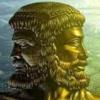

.png.995f4de39fd4d2cf4f5aa2ba1c4c410c.png)









